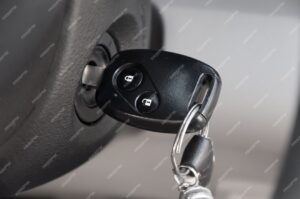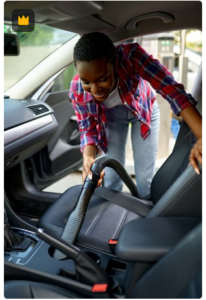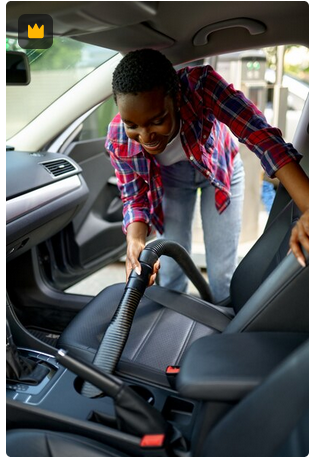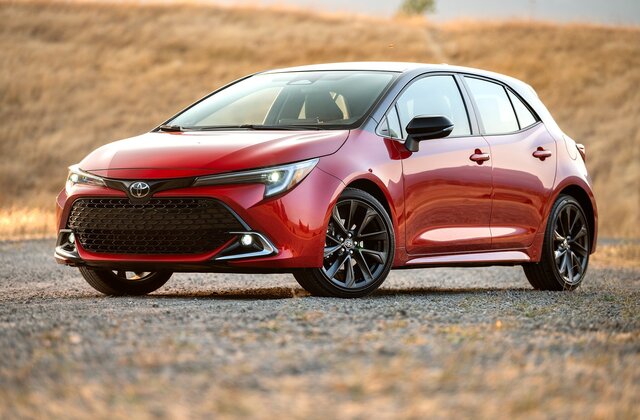Unveiling the Mystique: Exploring the High Price of Vintage Cars
Vintage cars are more than just a mode of transportation. They are a symbol of luxury, sophistication, and class. These rare and exquisite vehicles have captured the imagination of car enthusiasts all over the world, and for good reason. Vintage cars are a testament to the craftsmanship and artistry of a bygone era. But why are they so expensive? In this blog post, we will explore the mystique of vintage cars, taking a closer look at the factors that contribute to their high price. From the rarity of certain models to the cost of restoration, we will delve into the world of vintage cars and unveil the secrets behind their high price. Whether you are an avid collector or simply curious about the world of vintage cars, this post is sure to provide you with valuable insights and knowledge.
1. Introduction to the allure of vintage cars
Vintage cars have an undeniable allure that captivates the hearts of automotive enthusiasts around the world. These timeless works of art, with their elegant curves and polished chrome, evoke a sense of nostalgia and grandeur that is hard to resist.
One cannot help but be drawn to the rich history and craftsmanship that is embodied within each vintage car. These vehicles, hailing from a bygone era, represent a time when automobiles were not just modes of transportation, but symbols of status and style.
The allure of vintage cars lies not only in their aesthetic appeal, but also in their rarity. With each passing year, these automotive treasures become increasingly scarce, making them highly sought after by collectors and enthusiasts alike. The scarcity factor adds to their mystique, elevating their value and making them a sound investment for those fortunate enough to own one.
Moreover, vintage cars often carry a rich and fascinating backstory. They have witnessed the passing of time, bearing witness to historical events and societal changes. Each scratch and dent tells a story, hinting at the adventures and memories that were made in their presence.
Owning a vintage car is not simply about possessing a mode of transportation; it is about owning a piece of history, a piece of art, and a piece of one’s own personal identity. The allure of vintage cars lies in their ability to transport us back in time, allowing us to experience a bygone era firsthand.
In the following sections, we will delve deeper into the world of vintage cars, exploring their origins, the factors that contribute to their high price tags, and the passionate community that surrounds them. So buckle up and prepare to embark on a journey through the captivating mystique of vintage cars.
2. Understanding the factors that contribute to the high prices
Vintage cars have a certain allure that captivates enthusiasts and collectors alike. They exude a charm and elegance that is often unmatched by modern vehicles. However, one aspect that sets vintage cars apart is their high price tag. To truly appreciate the mystique surrounding these automobiles, it is crucial to understand the factors that contribute to their lofty prices.
First and foremost, rarity plays a significant role in determining the value of vintage cars. As the years pass, the number of well-preserved and original vintage cars dwindles. Many have succumbed to the ravages of time or have been modified, making those that have survived in their original condition even more desirable. The scarcity of these vehicles drives up their prices, as collectors are willing to pay a premium for a piece of automotive history.
Another factor that influences the high prices of vintage cars is their historical significance. Some vintage cars have played a pivotal role in shaping the automotive industry or have been associated with iconic figures. These cars become more than just modes of transportation; they become symbols of innovation, style, and cultural significance. The historical context and provenance of a vintage car can significantly impact its value, making it a sought-after gem for collectors and enthusiasts alike.
Condition is also a crucial consideration when evaluating the price of a vintage car. Impeccable preservation, meticulous restoration, and originality all contribute to a higher price tag. A vintage car in pristine condition with all its original components and features will command a premium, as it represents a rare find that showcases the car’s true essence.
Lastly, market demand plays a significant role in determining the high prices of vintage cars. The allure of owning a piece of automotive history, the nostalgia associated with classic designs, and the limited supply all contribute to a strong demand for these vehicles. As with any market, when demand outweighs supply, prices naturally soar.
In conclusion, understanding the factors that contribute to the high prices of vintage cars allows us to appreciate the allure and mystique that surrounds these automotive treasures. Rarity, historical significance, condition, and market demand all play integral roles in determining the value of these timeless machines. Whether you are a collector or simply an admirer, exploring the world of vintage cars unveils a captivating journey through history, craftsmanship, and unmatched elegance.
3. Rarity and exclusivity: The key to value appreciation
When it comes to vintage cars, rarity and exclusivity play a pivotal role in determining their high price tags. These iconic vehicles hold a certain allure that stems from their limited production numbers and elusive nature. The scarcity of vintage cars makes them highly sought after by collectors and enthusiasts alike, driving up their value over time.
Vintage cars are often associated with a bygone era of craftsmanship and elegance. They embody a sense of nostalgia and evoke a deep appreciation for automotive history. Owning a rare vintage car allows enthusiasts to experience a piece of the past, connecting them to a time when automobiles were meticulously handcrafted and represented the epitome of luxury and style.
The exclusivity of vintage cars further contributes to their value appreciation. Many of these classic vehicles were produced in limited quantities, making them rare gems in the automotive world. As time passes, the number of well-preserved vintage cars decreases, amplifying their exclusivity and desirability.
Moreover, certain vintage cars gain additional value due to their association with famous individuals, events, or significant historical moments. The connection to renowned figures or iconic films adds an extra layer of mystique, making these cars even more coveted and driving their prices to extraordinary heights.
Collectors and investors recognize the potential for significant financial returns when investing in rare and exclusive vintage cars. The limited supply and continuous demand create a market where prices can soar, making these vehicles an appealing investment option for those with a passion for automotive history.
In summary, the rarity and exclusivity of vintage cars are key factors contributing to their high price tags. These majestic vehicles embody a sense of nostalgia and represent a time of exceptional craftsmanship and elegance. The allure of owning a rare piece of automotive history, coupled with the potential for significant financial appreciation, make vintage cars a fascinating and lucrative investment for enthusiasts and collectors alike.
4. Historical significance and provenance: Unraveling the stories behind vintage cars
Vintage cars hold a certain allure that goes beyond their physical beauty. They have a rich history and provenance that contributes to their high price tags. Each vintage car has a unique story waiting to be unraveled, making them more than just a mode of transportation.
One of the key factors that contribute to the high price of vintage cars is their historical significance. These vehicles often represent a particular era, capturing the essence of a bygone time. They become a window into the past, allowing enthusiasts and collectors to experience the nostalgia and charm of a different era. Whether it’s a classic 1950s convertible or a roaring 1920s sports car, vintage cars are tangible pieces of history that hold immense value.
Provenance is another crucial aspect that adds to the mystique of vintage cars. The provenance of a car refers to its documented history, including its previous owners, maintenance records, and any notable events it has been a part of. This information helps authenticate and establish the car’s pedigree, making it more desirable to collectors.
Unraveling the stories behind vintage cars can be a fascinating journey. It often involves extensive research, delving into archives, and connecting with experts and enthusiasts who can shed light on a car’s past. The historical significance and provenance of a vintage car can greatly impact its value, as collectors seek out vehicles with unique stories and well-documented backgrounds.
Owning a vintage car not only allows you to indulge in the thrill of driving a piece of automotive history but also grants you the privilege of being a custodian of its story. Each scratch, each worn-out seat, and each engine roar tells a tale of days gone by, making vintage cars a truly priceless possession for those passionate about automotive history.
In conclusion, the historical significance and provenance of vintage cars contribute to their high price tags. They are more than just vehicles; they are gateways to the past, encapsulating the spirit of a bygone era. Unraveling the stories behind these cars adds to their mystique and appeal, making them a coveted treasure for collectors and enthusiasts alike.
5. Authenticity and originality: The impact on pricing
When it comes to vintage cars, authenticity and originality play a crucial role in determining their price. These two factors can make all the difference in the world and have a significant impact on the overall value of a classic automobile.
Authenticity refers to the car’s true identity and provenance, ensuring that it is indeed what it claims to be. This includes verifying its make, model, year of manufacture, and any unique characteristics or features associated with it. Buyers and collectors place immense value on owning a vintage car that is genuine and not a replica or imitation.
Similarly, originality is equally important. It refers to the car’s condition and the extent to which it retains its original components, both internally and externally. A vintage car that has been preserved with its original parts, paint, upholstery, and accessories holds a higher price tag than one that has undergone extensive modifications or replacements.
The rarity of an authentic and original vintage car further elevates its value. The scarcity of certain makes and models, especially those produced in limited quantities or discontinued, creates a sense of exclusivity and demand among collectors. This, in turn, drives up the prices even more.
Potential buyers and collectors are willing to pay a premium for vintage cars that possess these qualities. The allure of owning a piece of automotive history, with its unique charm and character, is a driving force behind the high price tags associated with these timeless machines.
It’s important to note that the authentication and originality of a vintage car can be verified through thorough documentation, expert inspections, and historical records. These steps ensure that the car’s value is justified and that buyers can have confidence in their investment.
In conclusion, authenticity and originality are key factors that significantly impact the pricing of vintage cars. Collectors and enthusiasts are willing to pay a premium for these rare and well-preserved automotive treasures, making them highly sought after in the market.
6. Restorations and modifications: Balancing value and personalization
Restoring and modifying vintage cars can be a double-edged sword when it comes to their value. On one hand, a meticulously restored vintage car can fetch a premium price, especially if it adheres to original specifications and retains its authentic charm. On the other hand, modifications and personalization can add a unique touch and enhance the driving experience, but they can also impact the car’s value.
When deciding on restorations or modifications, it’s crucial to strike the right balance between preserving the car’s historical value and infusing your personal style. Some enthusiasts prefer to keep their vintage cars in pristine condition, aiming for a showroom-worthy appearance that reflects the vehicle’s original glory. These purists focus on sourcing authentic parts, meticulously recreating period-correct details, and adhering strictly to the car’s original specifications. By doing so, they aim to maximize the car’s value as a collectible and cater to an audience of collectors who appreciate authenticity.
On the other hand, there are those who view vintage cars as a canvas for personalization and expression. These enthusiasts may opt for modifications that enhance performance, add modern features, or reflect their unique tastes. While these modifications can increase the enjoyment and usability of the car, they can also alienate traditional collectors who prioritize originality. In such cases, the car’s value may be influenced more by the subjective preferences of buyers rather than adhering to a strict valuation based on historical accuracy.
Ultimately, the decision to restore or modify a vintage car should be based on your personal goals and preferences. Consider factors such as your intended use for the car, your budget, and the potential impact on its value. If you’re looking to maximize investment potential, a faithful restoration may be the way to go. However, if you prioritize personalization and creating a one-of-a-kind driving experience, modifications may be the path to take.
Remember, the mystique of vintage cars lies not only in their price but also in their stories, craftsmanship, and the emotions they evoke. Whether you choose to preserve their originality or put your own spin on them, vintage cars will continue to captivate enthusiasts and collectors alike, reminding us of the golden age of automotive design and engineering.
7. The role of demand and market trends in determining prices
The allure of vintage cars lies not only in their timeless beauty and craftsmanship but also in their exclusivity. These prized possessions are often associated with a certain prestige and rarity, commanding high prices in the market. But what exactly determines the exorbitant price tags attached to these automotive gems?
One key factor that influences the value of vintage cars is the concept of demand. As with any commodity, when the demand for a particular vintage car increases, its price naturally follows suit. This demand can be influenced by various factors such as the car’s historical significance, its association with iconic figures or events, and its overall desirability among collectors and enthusiasts.
Market trends also play a crucial role in determining the prices of vintage cars. Just like in the stock market, the value of these classic automobiles can fluctuate depending on market conditions. For instance, if there is a surge in interest for a particular make or model due to a resurgence of nostalgia or a renewed appreciation for its design, the price may skyrocket accordingly. Conversely, if the market becomes saturated with a certain type of vintage car, its value may decrease as the supply outweighs the demand.
Additionally, the condition and authenticity of a vintage car can significantly impact its price. A meticulously maintained and fully restored vehicle will generally command a higher price than one in poor condition or with aftermarket modifications. Collectors and buyers often place a premium on originality and authenticity, valuing cars that have retained their original features, parts, and paintwork.
Lastly, the rarity and scarcity of a vintage car can greatly influence its price. Limited production numbers, discontinued models, or cars that were never mass-produced can make them highly sought after and, consequently, drive up their market value. The notion of exclusivity plays a significant role in the mystique of vintage cars, and collectors are willing to pay a premium for the privilege of owning something truly unique.
In conclusion, the high prices associated with vintage cars are a result of various factors, including demand, market trends, condition, and rarity. As the allure of these automotive treasures continues to captivate enthusiasts worldwide, the mystique surrounding their price tags will persist, making them highly sought after and coveted pieces of automotive history.
8. The influence of iconic models and legendary brands
The allure and high price of vintage cars can often be attributed to the influence of iconic models and legendary brands. These vehicles carry with them a rich history and a sense of nostalgia that captivates automobile enthusiasts and collectors alike.
Iconic models such as the Ford Mustang, Chevrolet Corvette, and Porsche 911 have become symbols of automotive excellence, representing a bygone era of design and engineering. These vehicles have not only stood the test of time but have also left an indelible mark on the world of automobiles. Their timeless appeal and enduring popularity contribute to their high value in the vintage car market.
Similarly, legendary brands like Ferrari, Aston Martin, and Lamborghini have established themselves as the epitome of luxury, performance, and prestige. Owning a vintage car from one of these prestigious brands is a statement of wealth, taste, and exclusivity. The craftsmanship, attention to detail, and superior engineering associated with these marques further elevate their desirability and, consequently, their price.
Furthermore, the scarcity of certain models and limited production runs add to the mystique and value of vintage cars. As time goes on, the number of well-preserved examples decreases, making them even more sought after by collectors and enthusiasts. This scarcity drives up prices as the demand for these rare and unique vehicles continues to grow.
In summary, the influence of iconic models and legendary brands plays a significant role in the high price of vintage cars. Their historical significance, timeless appeal, and limited availability contribute to their allure and make them highly coveted by individuals passionate about automotive history and craftsmanship.
9. Investment potential: Is buying a vintage car a wise financial decision?
Vintage cars have always held a certain allure, captivating enthusiasts and collectors alike. Beyond their undeniable aesthetic appeal and historical significance, many people are drawn to the potential financial benefits of owning a vintage car. But is buying a vintage car truly a wise investment?
The answer to that question is not as straightforward as one might think. Vintage cars can indeed appreciate in value over time, making them potentially lucrative investments. However, it is important to note that not all vintage cars will experience the same level of appreciation.
Several factors come into play when assessing the investment potential of a vintage car. Rarity and desirability are key considerations, as cars with limited production numbers or those associated with iconic brands tend to command higher prices in the market. The overall condition of the vehicle also plays a significant role, as pristine examples are often more desirable and fetch higher prices.
Additionally, keeping a vintage car in excellent condition requires ongoing maintenance and care. This can involve significant costs, especially if restoration work is needed. It is essential to factor in these expenses when considering the financial viability of investing in a vintage car.
Market trends and fluctuations also influence the investment potential of vintage cars. While some models may experience a steady appreciation in value, others may see fluctuations depending on shifts in demand and collector preferences. Conducting thorough research and seeking expert advice can help navigate these complexities and make informed decisions.
Ultimately, the decision to buy a vintage car as a financial investment should be approached with caution and careful consideration. It is essential to have a genuine passion for vintage cars and an understanding of the market dynamics before committing significant financial resources. While the potential for financial gain exists, it is important to remember that the primary value of a vintage car lies in the joy and pride of ownership, the connection to automotive history, and the sheer pleasure of driving a piece of automotive art.
10. Tips for buying and maintaining a vintage car without breaking the bank
Vintage cars have an undeniable allure that captures the attention of car enthusiasts and collectors alike. However, one common misconception about owning a vintage car is that it requires a hefty budget. While some vintage cars can indeed come with a high price tag, there are ways to indulge in this passion without breaking the bank.
Firstly, when it comes to buying a vintage car, it’s crucial to do thorough research. Take the time to educate yourself about different makes, models, and their corresponding market values. Look for cars that are less sought after or have less popular features, as they tend to be more affordable. Additionally, consider attending classic car auctions or exploring classified ads to find hidden gems at a lower cost.
Maintaining a vintage car can also be done on a budget if you adopt a proactive approach. Regular maintenance is key to preserving the car’s value and preventing costly repairs down the road. Learning basic car maintenance skills can save you money in the long run, as you can perform minor repairs and inspections yourself. Joining online forums or local vintage car clubs can provide valuable resources and advice from experienced enthusiasts.
Another cost-saving tip is to prioritize preventative measures. Invest in quality storage, such as a well-insulated garage or car cover, to protect your vintage car from harsh weather conditions and potential damage. Regularly wash and wax the car to prevent corrosion and maintain its shiny appearance. Additionally, be diligent about oil changes and fluid checks to ensure the engine runs smoothly and efficiently, thus avoiding costly repairs.
Lastly, consider finding a reliable and trustworthy mechanic who specializes in vintage cars. They often have a wealth of knowledge and can provide guidance on cost-effective repairs and maintenance. Building a good relationship with a mechanic can help you navigate any issues that may arise and potentially save you money by avoiding unnecessary expenses.
Owning a vintage car doesn’t have to drain your bank account. With careful research, proactive maintenance, and smart decision-making, you can enjoy the thrill of owning a piece of automotive history without breaking the bank. Embrace the mystique of vintage cars while being mindful of your budget, and you’ll embark on an exciting journey into the world of classic automobiles.
We hope you enjoyed delving into the world of vintage cars with us and exploring the reasons behind their high price tags. Vintage cars hold a certain allure and mystique that captivate enthusiasts and collectors around the world. From their timeless designs to their historical significance, these vehicles are much more than just cars – they are pieces of art and symbols of a bygone era. Understanding the factors that contribute to their value can help enthusiasts and potential buyers appreciate the investment and passion that goes into owning a vintage car. Whether you are a seasoned collector or simply admire these automotive gems, we hope this blog post provided valuable insights into the world of vintage cars and their allure.











+ There are no comments
Add yours